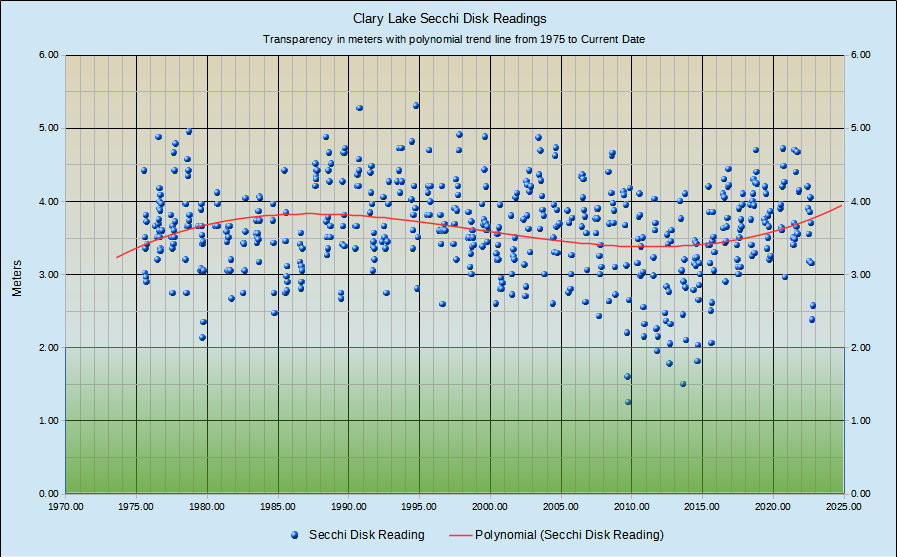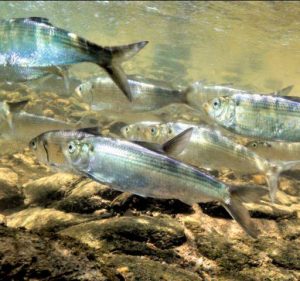 Damariscotta Lake has been experiencing considerable cyanobacteria growth in recent years, a troubling condition that affects many lakes in Maine. Some lakes are big enough for these types of events to impact only certain areas, though they can be lake-wide. This particular algal bloom in Damariscotta is in the Mills area. So far this summer I’ve noticed only slightly elevated levels of blue-green algae (cyanobacteria) in Clary as evidenced by faint wisps of dead algae on the water surface and slightly reduced transparency in early August. This is most likely the result of runoff from heavy rains in July. A small amount of algae growth is expected, and is more or less normal. Clary Lake however is by no means immune to severe algae blooms, defined as a transparency of 2 meters or less and while we haven’t experienced a severe bloom since 2014 (see chart at left), it can and will under the right condition happen again. It behooves us to be vigilant and minimize soil erosion on our properties to stop the introduction of sediment and phosphorus into our lake.
Damariscotta Lake has been experiencing considerable cyanobacteria growth in recent years, a troubling condition that affects many lakes in Maine. Some lakes are big enough for these types of events to impact only certain areas, though they can be lake-wide. This particular algal bloom in Damariscotta is in the Mills area. So far this summer I’ve noticed only slightly elevated levels of blue-green algae (cyanobacteria) in Clary as evidenced by faint wisps of dead algae on the water surface and slightly reduced transparency in early August. This is most likely the result of runoff from heavy rains in July. A small amount of algae growth is expected, and is more or less normal. Clary Lake however is by no means immune to severe algae blooms, defined as a transparency of 2 meters or less and while we haven’t experienced a severe bloom since 2014 (see chart at left), it can and will under the right condition happen again. It behooves us to be vigilant and minimize soil erosion on our properties to stop the introduction of sediment and phosphorus into our lake.
The Midcoast Conservancy staffer Patricia Nease who is monitoring the Damariscotta Lake bloom spoke at our recent Annual Meeting about the Invasive Plant Patrol program on Damariscotta Lake and things we should consider when starting up an IPP program on Clary Lake.





